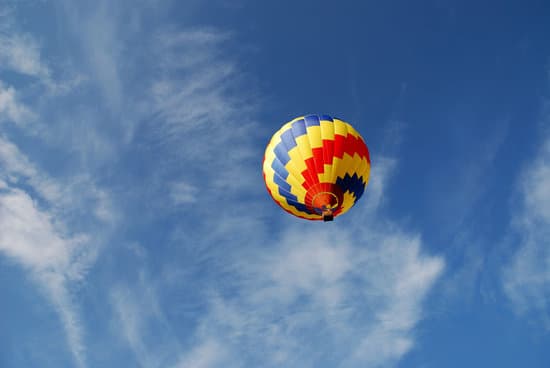Paramotoring is an entertaining sport but is there a danger involved? Isn’t it terrifying jumping into the air with just a fan strapped onto your back? If you have the same question, then let’s look into some death statistics and safety procedures that can explain whether paramotoring is dangerous or not.
Statistics say that every year there may be just one fatality in about 1504 users. You will find that the death statistics for paragliding is more than this. In paragliding, for every 752 users, there is one death. Even motorcycle drivers face one fatality for about 1382 people.
Though the statistics may not seem that much, death is not the only thing that can happen while paramotoring. Many users have to suffer serious injuries even if they have survived a crash.
Death and Injury Statistics of Paramotoring
Imagine you have invested in the first every paramotor of your life and are excited to go for a ride. You have come to an open area and strapped the paramotor in your back securely. The engine starts, and you start running forwards.
You increase your speed on the ground just as the wings of the paramotor start to lift. Slowly you feel yourself being lifted in the air, and you feel that exhilaration and excitement on every inch of your being. In that every moment, everything shatters to pieces.
You hit your foot on a rock and fall right on your face, skidding a good distance on the ground. Now you have got grass and dirt in your eyes and face, scratches on your body, and people laughing at you. And that is just until you pick up your face, and now you see your friends looking at you with horror in their eyes and sick look because you have a broken nose and teeth.
This may seem hilarious to you, but scenarios like this can occur and sometimes turn into life-threatening situations. So how serious can a small mistake turn into?
Data for Accidents Occurring While Paramotoring
BMJ Open conducted a survey that showed the types of accidents caused by paramotoring and the percentage for each. There were a total of 383 cases and some of the data as mentioned below:
| Accident Types | ||
| Types | Total | Percentage |
| Ground Obstruction / Terrain Collision | 76 | 19.8% |
| Contacting with Spinning Prop | 43 | 11.2% |
| Fall | 37 | 9.7% |
| Handling | 20 | 9.2% |
| Ultralight or Aircraft Collision | 14 | 3.6% |
| Equipment Malfunction | 58 | 15.1% |
| Hard Landing | 40 | 10.4% |
| Water Immersion | 10 | 2.6% |
| Deflation / Wing Malfunction | 35 | 9.1% |
| Damage / Line Tangle | 15 | 3.9% |
| Others | 64 | 9.4% |
It is clear from this data that collision due to ground obstruction or terrains is the most common accident type. This can lead to engine failure, equipment malfunctions, or even wing failure.
Staying Aware Of the Problem
If you do not want to accidentally collide with any ground obstructions or low terrains, then it is better to stay up in the sky. It is advised not to do any kinds of maneuvers when you are close to the field. A sudden wind can misbalance your movements can cause serious damage.
Tucker Gott, who is a Youtuber as well as paramotor enthusiasts, says that the best solution to this issue is to not fly above the surface of the earth. This ensures that the paramotor user is not affected by changes in wind conditions.
Some other problems can occur when you are leaving the ground. Some users, including Tucker, have seen that their body tends to turn right during the take-off. As they rise higher in the air, the problem becomes clearer. In Tucker’s situation, all of the three lines have combined. This had led to a deformity on the tip of the right-wing, which leads to the right tilt.
Since Tucker was already high in the air when this problem was discovered, there were two choices in front of him. The first would be to continue his flight in the high altitude and pump those brakes or try to pull at the lines so that they can loosen. The second choice would be to come back down to the ground.
In his situation, Tucker thought it wise to come back to the ground immediately and not tamper with the wings at such a high altitude. This is a great decision since it is better to handle the problem at the ground level. You are more at risk if you try to take care of any issue when flying at about 2000 feet.
Main Causes of Paramotoring Accidents
Another survey was conducted by BMJ Open that showed data about the different causes of paramotoring accidents. These causes help in understanding the areas that you need to be aware of when paramotoring.
| Main Causes of Paramotoring Accidents | ||
| Causes | Total | Percentage |
| Only Pilot Errors | 205 | 53.5% |
| Pilot Errors & Weather | 17 | 4.4% |
| Pilot Errors & Mechanical Failure | 17 | 4.4% |
| Weather Conditions (rain, gust, wind increase, thermal etc.) | 22 | 5.7% |
| Mechanical Failure (includes fuel exhaustion) | 67 | 17.5% |
| Unknown Causes | 24 | 6.3% |
| Others | 31 | 8.2% |
From the above data, it can be understood that paramotoring accidents are primarily caused by pilot errors and mechanical failure, and harsh weather conditions.
It can be concluded that unnecessary accidents can be avoided while paramotoring if you fly in favorable weather conditions, check your gear properly before the flight and enhance your piloting skills.
How to Enhance Your Piloting Skills?
You can learn to be a safer pilot in two ways. The first would be to learn piloting yourself and the second way is to go to a professional instructing school. If you go with the first option, then the result could most probably be death. However, not everyone has the means to learn from a professional.
If you are adamant about teaching yourself, you can find many online tutorials and videos on YouTube. There are also helpful websites that will tell you how dangerous and stupid it is to learn to pilot a paramotor independently. There are so many things that could go wrong when you learn to pilot yourself.
Most people do not know that there is a right and wrong time to start using your paramotor. If you start training at the wrong time when there are undetectable, invisible, but strong thermal conditions, then you can get flown away by the wind like a stray leaf. The wings of your paramotor can also get folded into half. This would mostly kill or gravely injure you.
The second issue that you can face is the wrong length and reach of the controls. If the controls are too short, then you may not be able to reach them mid-flight. That means you will not be able to get hold of the throttle or break when you need it. On the other hand, if the controls are set too long, they could get tangled in any prop. This could also kill you instantly since the paramotor will get out of your control.
There is another problem that might appear while self-training. This is the correct body posture and angle of the propeller that needs to be adapted when flying off the ground. This is something that you cannot learn without proper training. When the posture and propeller angle is not right, you can fall face down to the ground as soon as you launch yourself.
If you are still stuck on self-training, you could learn the in and out of a paramotor from tutorials. However, if you have understood the dangers of self-training, then it is time to enroll yourself in a paramotor flight institute.
Paramotor Flight Institute
Now that you have decided to enroll in a flight institute let’s look into what you can expect from the school. The first thing that the school will tell instruct you is to get the hang of the ground lessons at the instructor’s location. This would be done for one to two weeks. You will be more inclined towards theoretical knowledge than practical at this point.
You will also be spending time learning from books when the weather conditions are not favorable. During outside lessons, you will be taught the correct way to kit the paraglider wing. You will also be taught to handle the wing on the field and position the wing over the head. The right posture while running and take off will be taught during these lessons.
During the end of the course, the trainer will guide you through the process of maneuvering while in the air, launching and landing through a headset. Learning from a paramotor institute will let you know the paramotor rig parts and the correct way to maneuver the wing.
Common Mistakes Made By New Pilots
If you think you will not make a single mistake now that you have trained from a paramotoring institute, you are wrong. Studies prove that majority of the mishaps happen in the initial ten flights. One of the most common mistakes that people make is buying the right equipment. This is before they have joined any paramotoring institute.
You might find paramotoring interesting, but it is a whole different story when you have to do it yourself. Most people suffer a breakdown when they fly for the first time. Along with that, you may not have chosen the right equipment for you. Since this is an expensive investment, you need to think twice before you make your decision.
When you go to flight school, you will have a clearer idea of which paramotor would be best for you.
Another mistake that most paramotor enthusiasts make is skipping the tandem flight. This is when you go with a professional on a trial flight. It helps you understand whether you are fit for a paramotor.
Once that is done, you can fund a school that is near your area. Try to spend as much time with your instructor so that you develop a good bond with them. Remember that during your training, they are the ones with whom you will spend most of the time.
Maintain Gear for Your Safety
Failure of equipment when you are mid-flight is one of the scariest things that can happen to you. This can be avoided if proper precautions are taken for the maintenance of your paramotor. Being a mechanic and a paramotor pilot goes hand in hand, which means one cannot happen without the other.
When you see buy a paramotor, you will see a detailed manual that will tell you about the specific needs of the particular model. Other than that, some standard rules are the same for every paramotor.
Things to remember while checking the engine –
- Spark plug check is a must
- Tighten the bolts of the paramotor
- Prop rig should be readjusted and tightened
- Check the paramotor properly for gas leaks
- The integrity of the rubber mounts should be checked
- Check for idle stability
Maintenance of the wing –
- Check if the wing has suffered any tears or holes after each flight
- Clean the wings properly before packing and after landing
- During landing and launching, find a suitable area that would not damage the wing (look for areas that do not have brushes or gravels)
- Dry the wing entirely before you pack it up
- Lines of the wings should be tested before each flight to see if they can hold you
Maintenance of the equipment is necessary after you have completed ten hours flight. This would ensure that any faults in the paramotor are detected and corrected. Strictly follow the manual that came with your paramotor while maintaining it.
Ideal Conditions for Flying Your Paramotor
Weather is a significant condition when you are flying your paramotor. It is better to check if the weather is in your favor before you go on the flight since this could cause serious accidents or even pose a grave danger to your life.
Wind
The most important weather condition that can hugely impact your paramotoring flight is the wind condition. Checking the wind speed before you go on your flight is an essential thing. It is best to cancel your flying plan if the speed of the wind is around 12 mph. Avoid being a daredevil and postpone your flight plans for a later date.
A wind gust is another crucial thing. These are when the wind speed mixes with some sharp spikes that can make your paramotoring experience very unpleasant. Along with the wind speed, you need to check the wind gusts as well. If the gusts are around 5 mph more than the average for the day, then cancel your plans.
You will find many reliable applications that can help you determine the wind’s speed for the day. Every paramotor has a way to determine the wind speed and other information about the weather before they go on with their flight.
Precipitation
Expert paramotor users advise you to avoid using your paramotor when there is precipitation. You can be faced with a parachutal stall, which leads to a loss in forwarding momentum. You will find yourself sinking to the ground if you fly in this condition.
If it starts raining when you are mid-flight, then the best thing to do is to open the trimmers along with applying the speed bars. These settings will help you in landing safely. You should keep the settings on till the time you are prepared to flare.
Do not steer the paramotor using your brakes. Instead of this, you can use the toggles of your tip steering. When you are trying to land in the rain, you could try using tight turns. However, you should be cautious that the exits of the turns are not too aggressive since this could create an imbalance in your paramotor and tilt it. You can also enter into a parachutal stall by doing this.
The standard wing will be able to stall about 17 degrees of the attack angle. For wet wings, the attack angle will reduce to 9 degrees. This needs to be considered when you flare while landing.
If proper procedure is not followed, then it could lead to serious problems. Flaring should only be done when you have reached very close to the field.
Cloud Cover
It is an extraordinary feeling flying over the cloud or fog very early in the morning. Still, many things should be avoided so that you do not face any unanticipated scenarios. The CAA regulation of Rules of the Air states that flying into the clouds is illegal. It is also illegal to fly very close to the clouds. However, this would be based on the kind of cloud and also the paramotor that you use.
One of the terrifying things that a paramotor user could come across is Cloud suck. This happens when you are being sucked into and towards a cloud. That is why rules for cloud clearance are put into place so that you do not face cloud suck. This phenomenon is often caused due to cumulonimbus and cumulus clouds that tower in the sky.
Though cloud suck is a more common activity associated with paragliding due to thermalling, which is very common, it is not completely ignorable in paramotoring. During thermalling, pilots can find it hard to stay away from the clouds as they forcibly try to suck them inside.
You can understand the potential of the cloud suck from the cumulus cloud’s vertical reach. This would determine the rising air strength beneath the cloud and how powerful the cloud suck would be.
That is why it is said not to fly near or into any cloud. In case the visibility is low due to a cloudy day, avoid flying. For pilots who wish to fly above the clouds, try to find a break in the cloud and fly through that. You should remember that clouds can lead to parachutal stall since they make the wings damp.
Weather conditions cannot be anticipated, so you would have to depend on your training and common sense when there is a sudden change in weather mid-flight. If you feel that the weather changes are not suitable, try to find a way to land immediately. A simple wind gust could ruin your whole flight, so it is best to prevent any mishaps from happening.
Not Caring About Life
Life is precious, and you should never play with it. When it comes to paramotoring, no matter how experienced you become, taking weather changes for granted is not a smart thing to do. You would understand this better from the story of Read Flake, who was a very experienced paramount pilot.
Read had flown over 500 paramount flights, and he went out on a certain day to a free flight area, known as the Point of the Mountain. It was sometime past 10 O’clock, at which time most of the pilots were done with their paramotoring and gone home. The weather was slightly gusty, but Read knew he was experienced enough to handle it.
Though the weather was not favorable, Read just wanted to fly to the ridge and catch the thermals. He has a motor, and it was not his intention to fly high. So he launched his paramotor and flew to his destination. As he reached just over the ridge, a wind suddenly hit him and pushed him over to some power lines.
He tried to maneuver his paramotor away from these power lines, which led to a parachute stall. The paramotor dropped directly towards the ground from about a height of 40 feet. Luckily he survived, but the accident shatters his pelvis, two vertebrae in his spine, and one in the neck crushed. He also suffered from partial lung collapse.
The story clearly shows that even a person with so much experience could not control his paramotor in harsh weather conditions.
Avoid Unnecessary Risks
You cannot keep away from accidents, but you can prevent them from happening if you are careful. This is observed in Read’s case. He could have avoided the accident altogether if he had considered the risk he was taking by flying in such weather.
You cannot be complacent, or it can kill you. When paramotoring, do not take risks that are completely unnecessary. Paramotoring is very risky, and adding extra problems to it because of your laziness could lead to dangerous situations.
Read could have either avoided flying that day or take a longer route that was safer than the one he opted for.
The Story of Richard Biggerstaff
Another story that would help you understand the seriousness of paramotor safety is that of Richard Biggerstaff. Being a paramotor enthusiast, Richard liked visiting festivals and enjoyed the sport dearly. He already had about 30 flight training and went to the Austin Texas paramotoring festival after a hiatus of 9 months.
One evening, he went to the festival when everything went haywire. Witnesses say him hitting the ground after a spiral. A fire emerged from the impact, which was extinguished quickly. Another paramotor pilot saw this scenario and landed immediately. He rushed over to Richard, and as other witnesses came to the scene, he had to sadly inform them that Richard was dead.
Richard had been flying quite high, over 100 feet when he initiated the spiral. The trick he was doing was known as the nose-over spiral. Here the pilot and the wings are pointed down straight and rotates quickly.
The explanation for this accident could have been a blackout, which led to Richard losing control completely and not even knowing what happened. One cause for this could be equipment failure, which may have been clear from the fire.
Fires can only be caused if there is some fault with the equipment. It could also be caused due to the kind of spiral that Richard was doing that led him to lose consciousness.
Know About Spirals
Spirals are very dangerous, and it could lead to sudden blackouts. When you blackout during a spiral, it could lead to instant death even if the altitude is not much.
Paramotoring has certain risks that are associated with the activity. In addition to that, doing spirals or any other dangerous tricks mid-air is a death sentence.
Be Alert and Wise
There are much thrill and excitement in paramotoring. However, the dangers of the activity cannot be ignored at all. You should be upset about this since all kinds of adventure sports have some danger and risk linked to them. The danger is what attracts people to these sports.
During paramotoring, accidents are unavoidable, even when you have taken complete precautions. However, the risk should never stop you from enjoying the activity and be the best at it. However, despite the risks, you can always opt for safer paths and options that could be good for you.
Do not be crippled by fear and never get overconfident no matter how many years of experience you have. Finding the middle ground is essential in these cases. Proper training and practice is the key to reducing risks while paramotoring. Avoid being faced with similar circumstances as that of Richard Biggerstaff and Read Flake.
Do not be complacent at all and prepare yourselves for the worst. Be ready for all kinds of situations, and this could help in avoiding most accidents. Stay alert at all times and use common sense when you are faced with any sudden situations mid-air.
Frequently Asked Questions
Is a license necessary for Paramotoring?
No, a license is not necessary for paramotoring. It is a license-free activity and launched by foot, similar to hang gliders. There are certain aviation laws that paramotorists would have to follow. Knowing the laws regarding aviation is necessary before you go paramotoring.
Which is safer – Paragliding or Paramotoring?
Paramotoring is a safer sport as compared to paragliding due to many reasons. Paramotors do not have to face thermal activity and can get launched into zero wind. Due to this, there is no right time to launch a paramotor, and hence there are no penalties based on their launch.
Additionally, there is a stable forward momentum when it comes to paramotors, due to which the wings may not collapse easily. However, if the launching conditions are extreme, then both these sports’ danger level falls on the same level.






